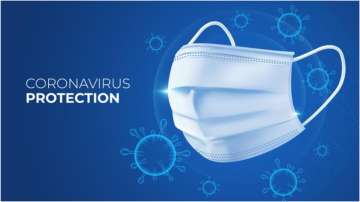COVID 19: Which mask is best for you and correct way to wear them | Explained by WHO
Many may have questions regarding maks like what fabric is best, should one wear it while exercising and the difference between different kind of masks. Here's what World Health Organisation (WHO) has to say about these and more.
Ever since the coronavirus pandemic began, the government, celebrities, influencers and everybody around has been asking all to wear masks. Now, as COVID 19 second wave intensifies and India is registering a record number of cases each day, it has become of grave importance to follow coronavirus safety protocols now more than ever. The most basic being wearing a mask (if at all you have to step out of your house, first priority should be to stay indoors). Many may have questions regarding masks like what fabric is best, should one wear it while exercising and the difference between different kind of masks. Here's what World Health Organisation (WHO) has to say about these and more:
Why should you wear a mask?
Masks are a key measure to suppress transmission and save lives. Masks should be used as part of a comprehensive approach including physical distancing, avoiding crowded, close-contact settings, good ventilation, cleaning hands, covering sneezes and coughs, and more. Depending on the type, masks can be used for either protection of healthy persons or to prevent onward transmission.
Also read: How will India get herd immunity and how can we put an end to Coronavirus pandemic?
Who should wear what kind of mask?
As per the WHO, medical masks are recommended for:
- Health workers in clinical settings.
- Anyone who is not feeling well, including people with mild symptoms, such as muscle aches, slight cough, sore throat or fatigue.
- Anyone awaiting COVID-19 test results or who has tested positive.
- People caring for someone who is a suspected or confirmed case of COVID-19 outside of health facilities.
Apart from these, WHO recommends medical masks for people above 60 and those with underlying health conditions because they are at a higher risk of becoming seriously ill with COVID-19.
Non-medical, fabric masks can be used by the general public who are under the age of 60 and who do not have underlying health conditions.
Should you wear a mask while exercising?
Many have been asking if they should be wearing a mask while exercising. According to WHO, even when you’re in an area of COVID-19 transmission, masks should not be worn during vigorous physical activity. It says that masks can reduce ones breathing capacity during an intense physical workout session. It recommends keeping at least 1 meter distance from others and in case you’re indoors, there should be adequate ventilation.
Also read: Proning: How to increase oxygen level at home while waiting for help
What is the difference between medical masks and respirators, like N95s?
Medical masks (also known as surgical masks) are:
- composed of 3 layers of synthetic nonwoven materials
- configured to have filtration layers sandwiched in the middle
- available in different thicknesses
- have various levels of fluid-resistance and filtration
Respirators (also known as filtering facepiece respirators – FFP) are available at different performance levels such as FFP2, FFP3, N95, N99.
Also read: How to use pulse oximeter correctly, step by step process
Medical masks and respirator masks are similar in their protection value. However, respirators are specific for certain procedures and instances because they have a tightly fitted component to them. Respirator masks are designed to protect healthcare workers who provide care to COVID-19 patients in settings and areas where aerosol generating procedures are undertaken. Healthcare workers should be fit tested before using a respirator to ensure that they are wearing the correct size. Wearing a loose-fitting respirator will not offer the same protection to the wearer and may allow small particles to get inside the mask through the sides.
How to choose what fabric mask to buy, or ideal fit and fabrics if you make your own?
There are three things to keep in mind when choosing a fabric mask: filtration, breathability and fit. The mask should be held in place comfortably with little adjustment using elastic bands or ties. Find the one that fits closely over your nose, cheeks and chin. They should not penetrate through gaps but get filtered through the layers.
Fabric masks should be made of three layers of fabric:
- Inner layer of absorbent material, such as cotton.
- Middle layer of non-woven non-absorbent material, such as polypropylene.
- Outer layer of non-absorbent material, such as polyester or polyester blend.
How to clean a fabric mask?
Fabric masks should be washed in soap or detergent and preferably hot water at least once a day. If it is not possible to wash the mask in hot water, then wash it in soap/detergent followed by boiling the mask for a minute.
Can masks with exhalation valves be used to prevent transmission of COVID-19?
No, WHO does not advise using masks or respirators with exhalation valves. While these masks make it easier to breathe, they can allow the transmission of the virus through breathing spaces making these mask ineffective at preventing the spread of COVID-19 or any other respiratory virus.
General tips:
- Make sure to clean your hands before touching your mask.
- Make sure you have your own mask and do not share it with others.
- Resist the temptation to pull down your mask to your chin or take if off when speaking to other people.
- Do not store your mask around your arm or wrist or pull it down to rest around your chin or neck. Instead, store it in a clean plastic bag.
Disclaimer: This content is created and published for informational purposes only. It is not intended to be a substitute for professional medical advice. For more information, please consult a doctor.
For more information click here!
